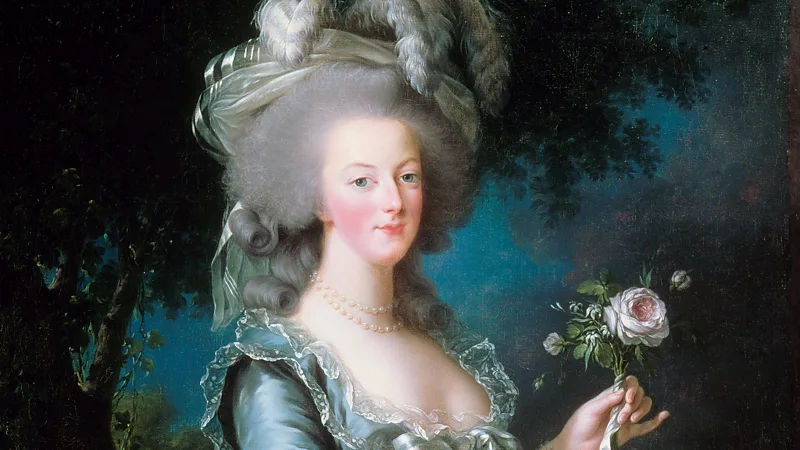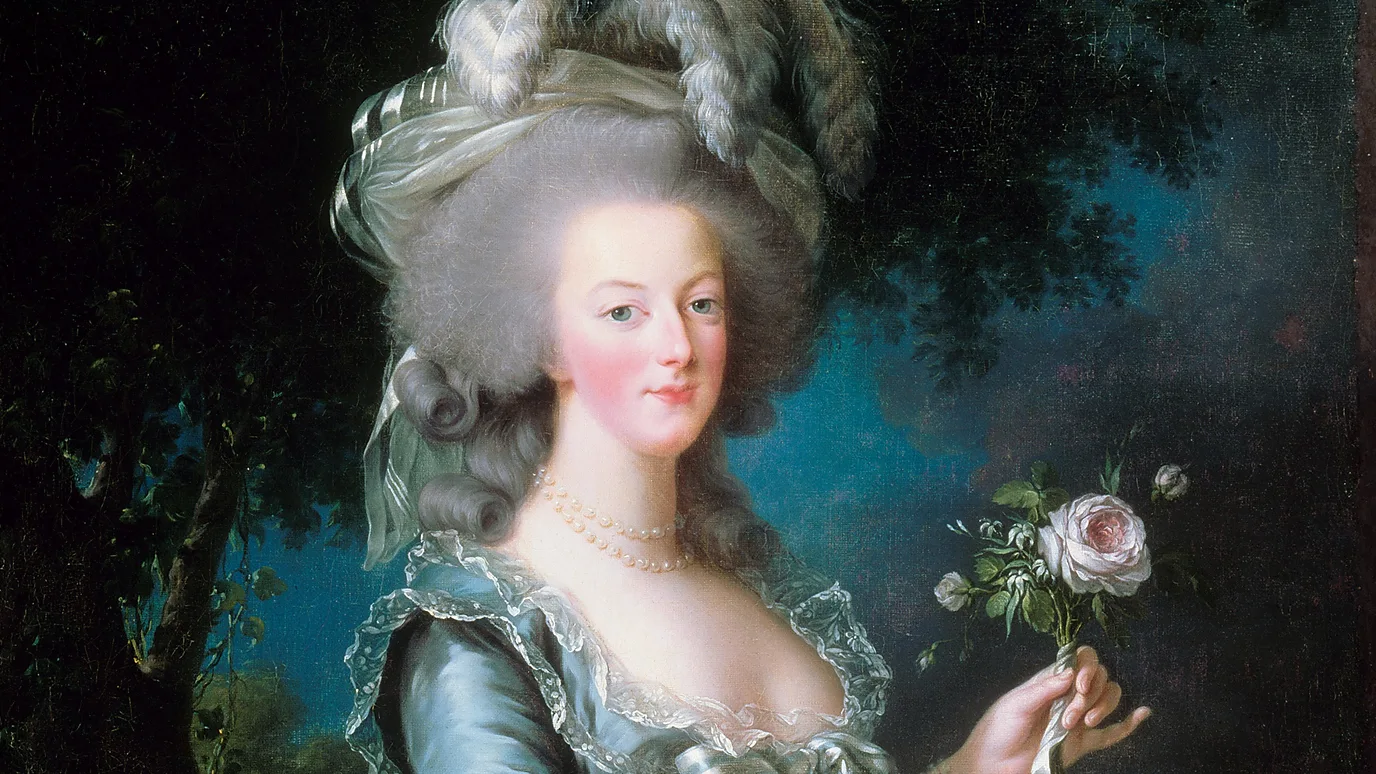Once the most despised woman in Europe, Marie Antoinette was vilified as an empty-headed libertine, a conspirator and a reckless spendthrift – and then publicly executed. Now a major exhibition interrogates some of the myths that surround her.
“All eyes will be on you,” cautioned Maria Theresa, Empress of Austria, in April 1770, as her daughter, the 14-year-old Archduchess Maria Antonia prepared to marry the future King Louis XVI of France at the Palace of Versailles. Yet the scrutiny endured by Marie Antoinette, as the Archduchess was later known, was far crueller than anticipated. She was vilified as a libertine, a conspirator and a reckless spendthrift, whose exorbitant lifestyle was bankrupting the country – accusations that would precipitate the French Revolution and lead to a rare and shocking spectacle: the public execution of a queen.
Our fascination with Marie Antoinette has never waned, but increasingly her story is being questioned. Did she deserve to be despised, or was she a martyr caught between conflicting interests and destroyed by lies? For Dr Sarah Grant, the curator of Marie Antoinette Style, opening at the V&A on 20 September, she is the “most fashionable, scrutinised and controversial queen in history”. Marking the 270th anniversary of the birth of this mould-breaking but maligned figure, the show celebrates her sense of style, and interrogates some of the myths associated with her.
One such myth is her apocryphal “let them eat cake” comment, a brattish response to devastating bread shortages. Attributed to “a great princess” in Rousseau’s Confessions, written in 1765 when Marie Antoinette was aged 10 and still in Austria, it cannot have come from her. More fake news appears in the form of the “diamond necklace affair” (1785-6), in which a necklace of more than 600 diamonds was falsely ordered in the queen’s name, solidifying her reputation for excess despite her vindication at trial. A replica, along with the Sutherland Necklace, reportedly containing stones from the original, features in the exhibition.
Other items speak to her legacy as a tastemaker: opulent furnishings from the French Revival (1800-1890), for example, that emulated elements of her style, and frilly pink shoes from Sofia Coppola’s Oscar-winning Marie Antoinette (2006), designed by Manolo Blahnik, who confesses in the catalogue’s foreword that he remains “enraptured by everything about her”.
The young queen’s lavish lifestyle was certainly salt in the wounds of the starving poor. Bound to a weak-minded and rather dull husband, who was more interested in hunting than in her, and was for seven years medically unable to consummate their marriage, she found diversion in extravagant parties, gambling and fashion. Her fancifully decorated dresses with vast structural panniers, crowned with towering ornamental hairstyles, were widely copied at the time, and later inspired pop stars such as Madonna and Rihanna, and fashion designers such as Vivienne Westwood, Dior and Moschino.
‘Madame Déficit’
The moniker of “Madame Déficit”, however, was unjustified. Though she spent less than the king’s brothers, and was just one of a series of profligate French monarchs, the foreign queen became a convenient scapegoat for the French government’s handling of funds. “It’s the spending on wars that is actually what bankrupts France, certainly not the money that Marie Antoinette is spending,” Grant tells the BBC. “Her wardrobe budget is the equivalent today of around $1 million, but France spent $11.25 billion on just the American War of Independence.”
Even scaling back her spending made her new enemies. “When she stops wearing silks, the silk industry is in uproar because their livelihood is threatened,” says Grant. And when, in 1783, she tried to project a different image with a portrait of her in the more casual “country” attire that she would popularise, it was swiftly replaced by something more elaborate and formal. “She is expected to create a regal spectacle,” Grant continues.
“That is how the monarchy maintains its authority.”
The folklore surrounding this early modern celebrity also overlooks her philanthropy. She recycled her wardrobe each year, sharing it between her staff; and she adopted several children, including Jean Amilcar, originally from Senegal, who she released from slavery.
She also “turned down offers of expensive gifts from her husband” and “gave generously to charities”, author Melanie Burrows (née Clegg), who has written widely on the period, tells the BBC. Far from being the “empty-headed idiot she is often portrayed as”, argues Burrows, she was “well-intentioned, generous and kind-hearted”.
Presented to the French court as a peace offering after years of hostility with Austria, Marie Antoinette had split allegiances that mired her in suspicions − not all unfounded − that she shared military secrets with Austria.
She was deemed indifferent to the French people, and derogatory references to her as “L’Autri-chienne” (a wordplay on the French for both Austrian and bitch) exemplify the distrust that fuelled public feeling.
Unlike a king, a queen had no official power and was meant to remain in the background.
Marie Antoinette was considered too prominent, too vivacious and too willing to use her charm to meddle in political affairs, secretly lobbying ministers and opposing the constitutional reforms the country cried out for. As far as her enemies were concerned, she needed to be brought down. Libellous pamphlets circulated, some pornographic, accusing her of promiscuity (Count Axel von Fersen is, in fact, her only known lover), orgies, lesbian relations and even incest.
The gossip was “all driven by misogyny”, argues Grant, adding that “a lot of the myths that persisted… arose in the 19th Century when her biographies [were] written by men”. According to Burrows, the queen was actually quite prudish. She rarely drank, she says, engaged in only “very mild flirtation” and “hated to be seen naked even by her own maids”. Yet these tropes persist. In Marie Antoinette’s World – Intrigue, Infidelity, and Adultery in Versailles (2020), Will Bashor speculates that her chronic uterine bleeding was caused by venereal disease. But he also argues that she was “emotionally abused”, “bored” and “neglected”, and though he finds her guilty of seeking pleasure outside her marriage, concludes that, for him at least, she was “forgiven”.
In reality, “she was a devoted mother,” Dr Laura O’Brien, Associate Professor of Modern European History at Northumbria University in the UK, tells the BBC, referencing the “gentler and more emotional connection” the queen had with her children, in contrast to her own upbringing. She was the first French queen to breastfeed, and to dress – as seen in the rejected portrait – in a manner suited to parenthood and life at her rural retreat.
The continuing fascination with Europe’s most loathed queen is also linked to the tragedy of her story: a child bride from a royal dynasty forced into an impossible situation, and ultimately reduced to a tragic figure in a white chemise, her hair shorn short, carried by cart to her death. For revolutionaries, she became a symbol of everything France needed to change, and her execution in 1793 attempted to cleanse the country of the worst of the Ancien Régime.
Whether or not Marie Antoinette’s death was justified, it failed to stifle her influence. A trend emerged for short “porcupine” haircuts and blood-red chokers suggestive of the guillotine’s cut. She was detested by those who believed the stories surrounding her, but she was also widely – and enduringly – admired.
“For me, this exhibition is another dream fulfilled,” Blahnik commented in a recent interview. “The re-vindication of Marie Antoinette.”
BBC














